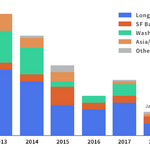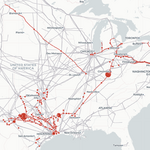


Summary Results The proposed Trans Mountain Expansion Project (TMEP) would increase the number of oil tankers carrying tar sands from Vancouver, Canada through the Salish Sea and down the…

A new investigation by Greenpeace has found a broad range of hazardous chemicals in children’s clothing and footwear across a number of major clothing brands, including fast fashion, sportswear and…

Greenpeace’s Oceans Director, John Hocevar, has an 11-year old niece named Anna. When Anna was little, she would spend hours asking John questions about the ocean. “Why are dolphins always…

“Too Far Too Often” details the unethical and inappropriate tactics employed by ETP and related companies against opponents of DAPL, and highlights how, in spite of increased global scrutiny and…

In St. Petersburg Florida, “Creative demonstration” doesn’t even begin to explain how Campaign Coordinator Justin Morris chose to tell the story of stifled Indigenous voices in an ongoing battle for…